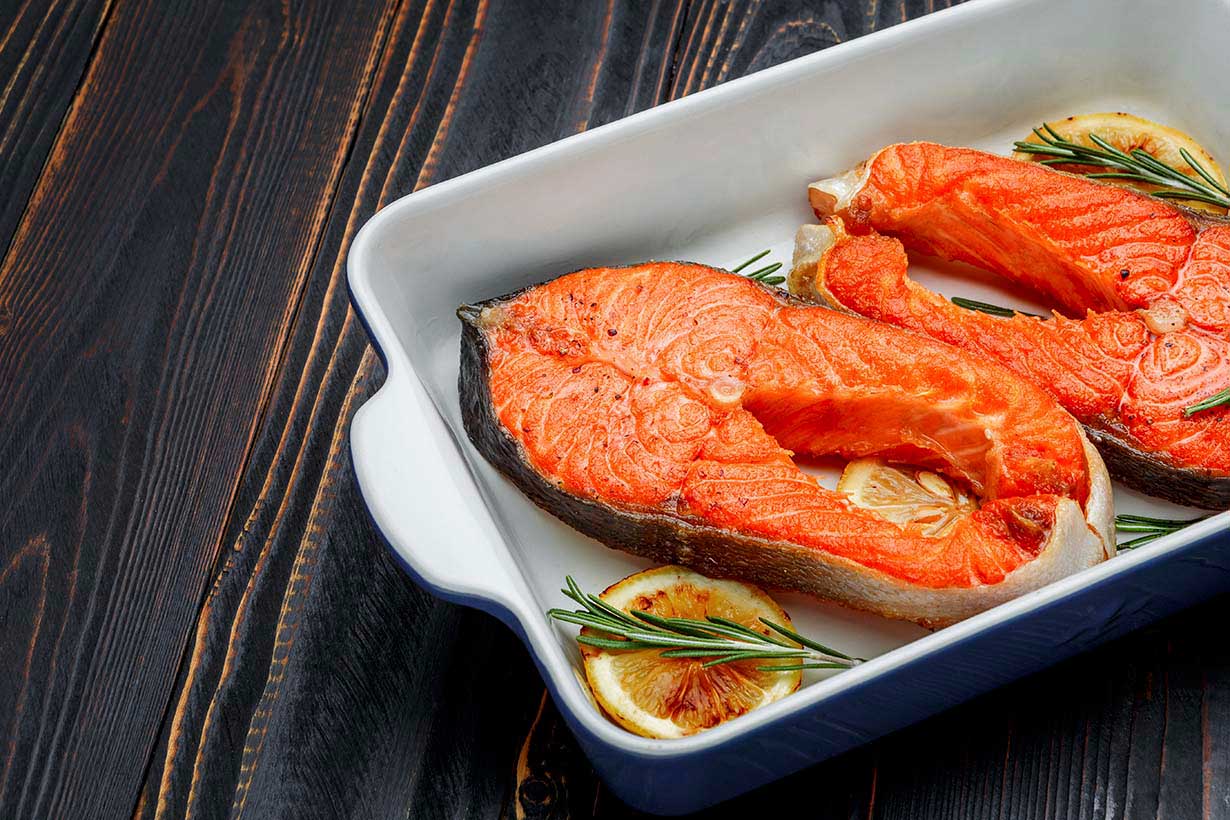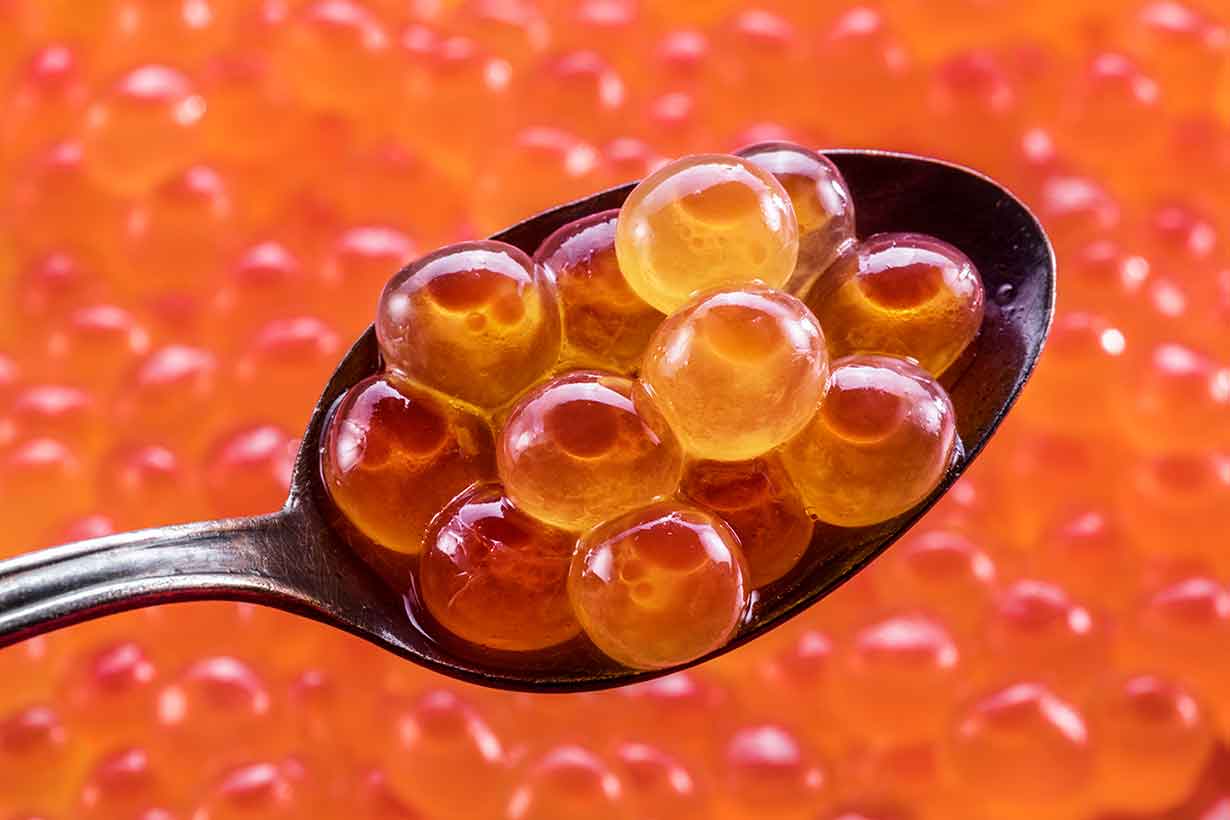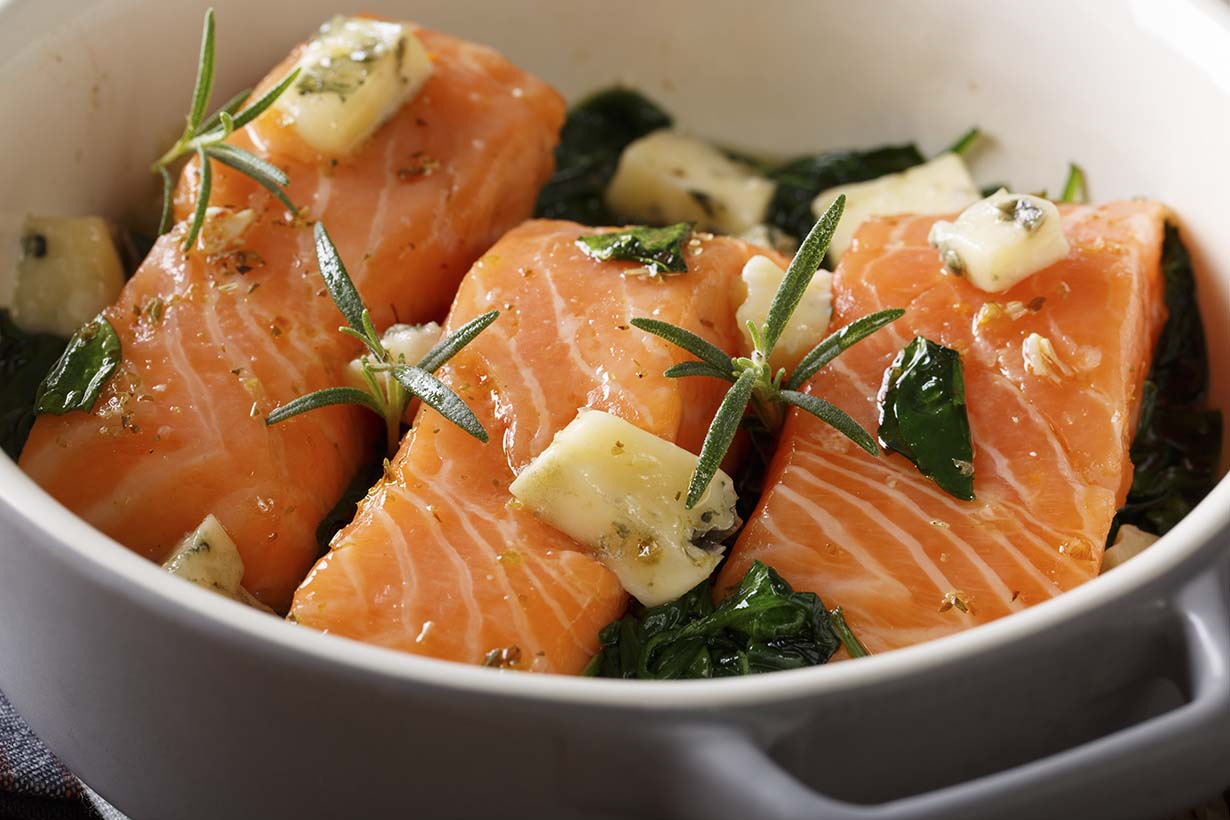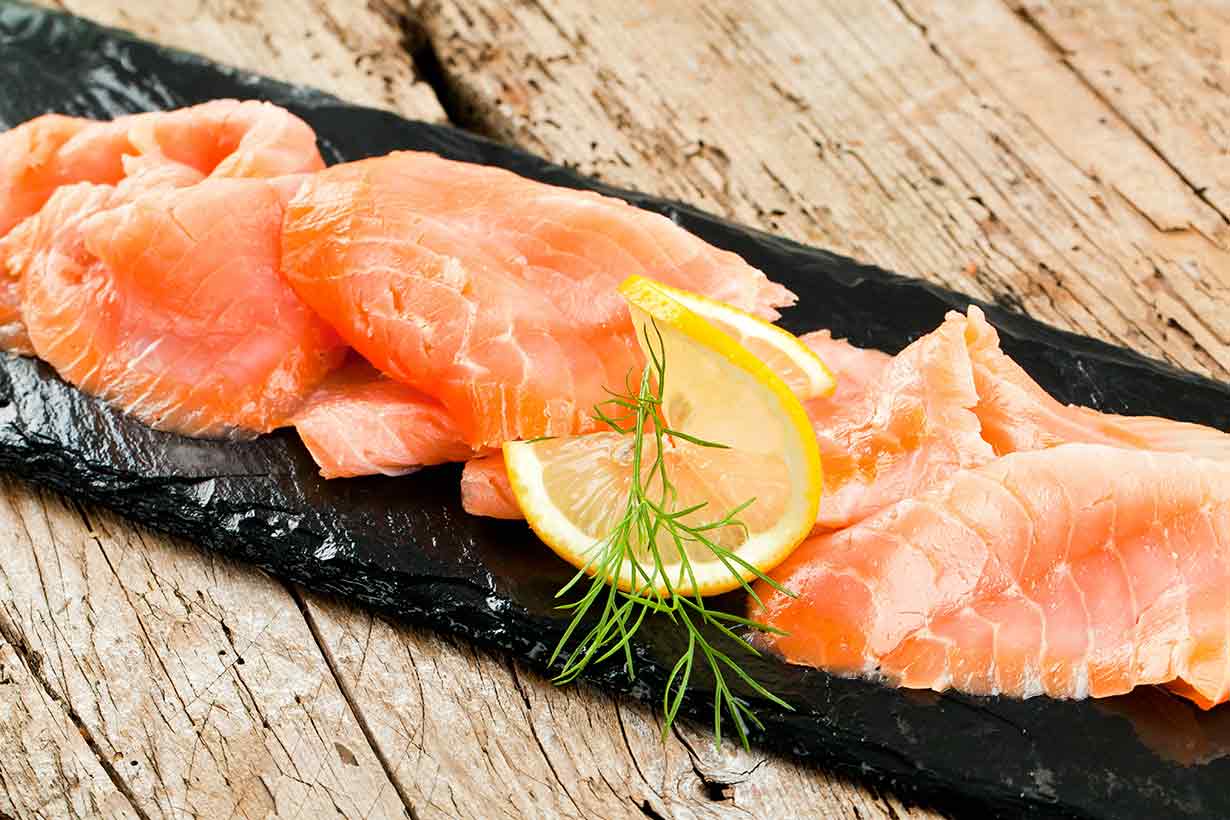6 Types of Salmon and Their Nutrition Facts
Salmon is one of the most nutritious seafood options, and it is rich in omega-3 fatty acids and other beneficial nutrients.
However, the term “salmon” refers several species within the Salmonidae family, each with distinct nutritional values.
Generally speaking, all salmon is a healthy choice, but different varieties vary nutritionally.
This article examines six types of salmon and their nutritional profiles. How do they compare? What are the differences between farmed and wild salmon?
Let’s find out.
To ensure an accurate, like-for-like comparison, all nutritional data is provided per 100 grams (3.5-ounces) of cooked weight. The source of this data is the USDA’s FoodData Central database.
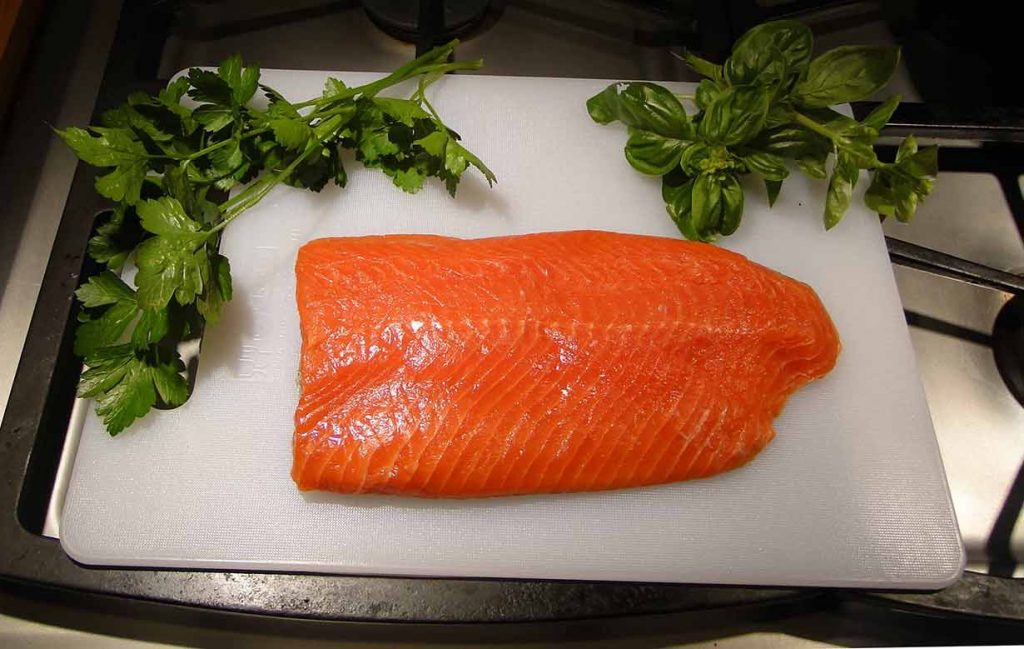
Table of contents
1) Atlantic Salmon
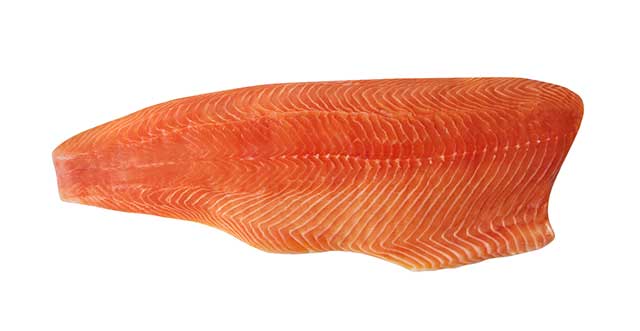
Atlantic salmon, also known as Salmo salar, inhabit the North Atlantic ocean.
This species is the most commercially popular type of salmon and is available in both farmed and wild forms.
Due to historical overfishing, wild Atlantic salmon populations are low, and most Atlantic salmon on the market comes from aquaculture. Norway, followed by Chile, are the biggest producers of Atlantic salmon—and salmon in general (1).
Because farmed and wild Atlantic salmon consume different diets, their nutritional properties differ slightly.
Wild salmon feed on smaller fish, squid, and plankton. On the other hand, farmed fish consume fish feed pellets, the composition of which varies by farm and country.
The table below shows the basic nutritional profile per 100 grams of cooked weight for both wild and farmed varieties of Atlantic salmon (2, 3):Nutrient Farmed Atlantic Salmon Wild Atlantic Salmon Calories 206 kcal 182 kcal Carbohydrate 0 g 0 g Fiber 0 g 0 g Sugars 0 g 0 g Fat 12.4 g 8.13 g Saturated fat 2.4 g 1.26 g Monounsaturated fat 4.18 g 2.7 g Polyunsaturated fat 4.55 g 3.26 g Omega-3 2.43 g 2.59 g Omega-6 0.67 g 0.22 g Protein 22.1 g 25.4 g Cholesterol 63 mg 71 mg Sodium 61 mg 56 mg
Since wild salmon is leaner than farmed salmon, it has slightly more protein and a lower fat content.
2) Chinook (King Salmon)
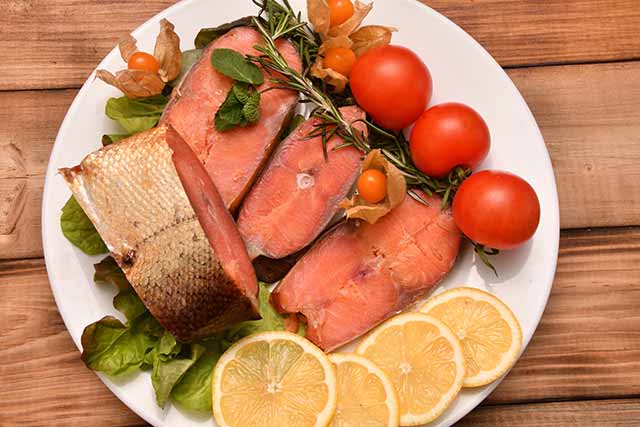
Chinook salmon, also known as “king salmon,” reside in the the North Pacific Ocean.
The “king” designation refers to the size of this species, which can grow to around 135 lbs (61 kg) (4).
Compared to other salmon species, Chinook salmon typically has a higher fat content, resulting in a higher number of calories.
Per 100 grams, cooked Chinook salmon provides the following nutritional values (5):Nutrient Amount Calories 231 kcal Carbohydrate 0 g Fiber 0 g Sugars 0 g Fat 13.4 g Saturated fat 3.21 g Monounsaturated fat 5.74 g Polyunsaturated fat 2.66 g Omega-3 2.14 g Omega-6 0.14 g Protein 25.7 g Cholesterol 85 mg Sodium 60 mg
3) Chum Salmon
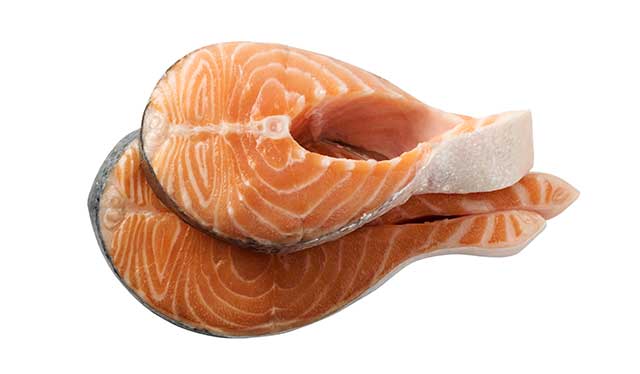
Chum salmon, also called “dog salmon,” “keta,” or “silverbrite,” is native to the Pacific ocean.
Most commercially available chum salmonn comes from Alaska.
Chum has a lighter texture and milder flavor than other types of salmon.
It is also the second-largest species after Chinook, reaching weights of up to 35 lbs (16 kg) (6).
Marine biologists consider chum salmon a sustainable and responsibly harvested fish.
The nutritional values for cooked chum salmon per 100 grams are as follows (7):Nutrient Amount Calories 154 kcal Carbohydrates 0 g Fiber 0 g Sugars 0 g Fat 4.83 g Saturated fat 1.08 g Monounsaturated fat 1.98 g Polyunsaturated fat 1.15 g Omega-3 0.95 g Omega-6 0.08 g Protein 25.8 g Cholesterol 95 mg Sodium 64 mg
4) Coho Salmon
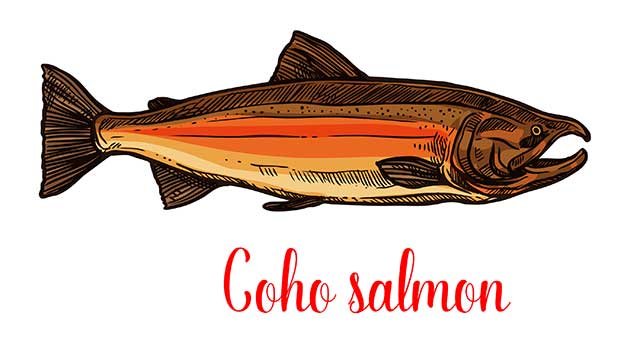
Coho is one of the most widely available available salmon species and is sold in food markets worldwide.
Also known as “silver salmon,” this species inhabits both the Eastern and Western coasts of the North Pacific Ocean.
While most coho salmon from Alaska is wild, aquaculture production has increased over the past few decades.
As with Atlantic salmon, there are slight nutritional differences between farmed and wild coho, with wild salmon being the leaner option.
The table below shows the nutritional values for farmed and wild coho salmon per 100 grams of cooked weight (8, 9):Nutrient Farmed coho salmon Wild coho salmon Calories 178 kcal 139 kcal Carbohydrate 0 g 0 g Fiber 0 g 0 g Sugars 0 g 0 g Fat 8.23 g 4.3 g Saturated fat 1.94 g 1.05 g Monounsaturated fat 3.62 g 1.58 g Polyunsaturated fat 1.96 g 1.27 g Omega-3 1.36 g 1.11 g Omega-6 0.37 g 0.06 g Protein 24.3 g 23.4 g Cholesterol 63 mg 55 mg Sodium 52 mg 58 mg
5) Pink Salmon (Humpback)
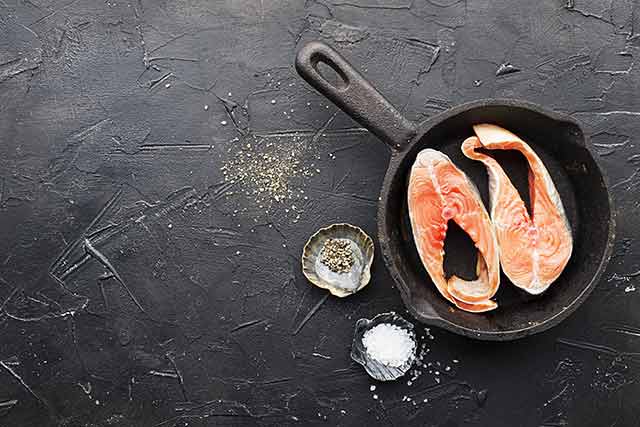
Pink salmon, also known as “humpback” salmon, is the smallest species of Pacific salmon. It mainly inhabits the North Pacific, particularly around Alaska (10).
The vast majority of pink salmon is wild-caught, and this species is commonly used in canned or smoked salmon products.
Pink salmon has light-colored flesh and a mild flavor, with a lower fat content compared to most other salmon varieties.
Each 100 grams of cooked pink salmon provides the following nutritional values (11):Nutrient Amount Calories 153 kcal Carbohydrate 0 g Fiber 0 g Sugars 0 g Fat 5.28 g Saturated fat 0.97 g Monounsaturated fat 1.62 g Polyunsaturated fat 0.97 g Omega-3 0.73 g Omega-6 0.12 g Protein 24.6 g Cholesterol 55 mg Sodium 90 mg
6) Sockeye Salmon
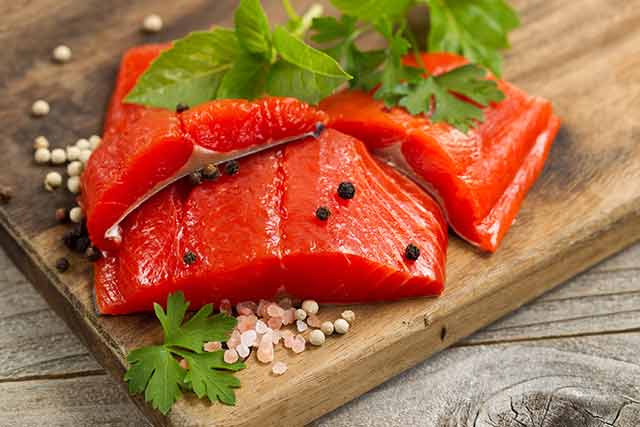
Also known as “red salmon” or “blueback,” sockeye salmon is a species that lives in the North Pacific Ocean and surrounding river systems (12).
The contrasting names come from the fact that sockeye salmon have blue skin but red flesh. The bright red color of sockeye fillets is due to their diet, which is rich in carotenoid-containing zooplankton.
Sockeye salmon primarily feed on zooplankton, small marine organisms that live near the ocean’s surface (13).
Among the different types of salmon, sockeye has a moderate fat content, placing it somewhere in the middle compared to other species.
Here are the nutritional values of cooked sockeye salmon per 100 grams (14):Nutrient Amount Calories 156 kcal Carbohydrates 0 g Fiber 0 g Sugars 0 g Fat 5.57 g Saturated fat 0.97 g Monounsaturated fat 1.86 g Polyunsaturated fat 1.33 g Omega-3 1.01 g Omega-6 0.21 g Protein 26.5 g Cholesterol 61 mg Sodium 92 mg
For a full guide to the nutritional benefits of sockeye salmon, see this article:
8 Benefits of Wild Alaskan Sockeye Salmon
Which Type of Salmon Provide the Most Nutritional Value?
As demonstrated in this article, there are several varieties of salmon, each with its own unique nutritional profile.
That said, all salmon—whether wild or farmed—provides a range of beneficial nutrients and, most importantly, an excellent source of omega-3 fatty acids.
Atlantic and chinook are the fattiest species and tend to have the highest omega-3 content.
However, all types of salmon offer nutritional benefits, making any option a healthy choice.
To learn how to cook salmon for great flavor, see this guide:
How To Cook Salmon: Perfect Fillets Every Time
For more information on omega-3-rich fish, see:

